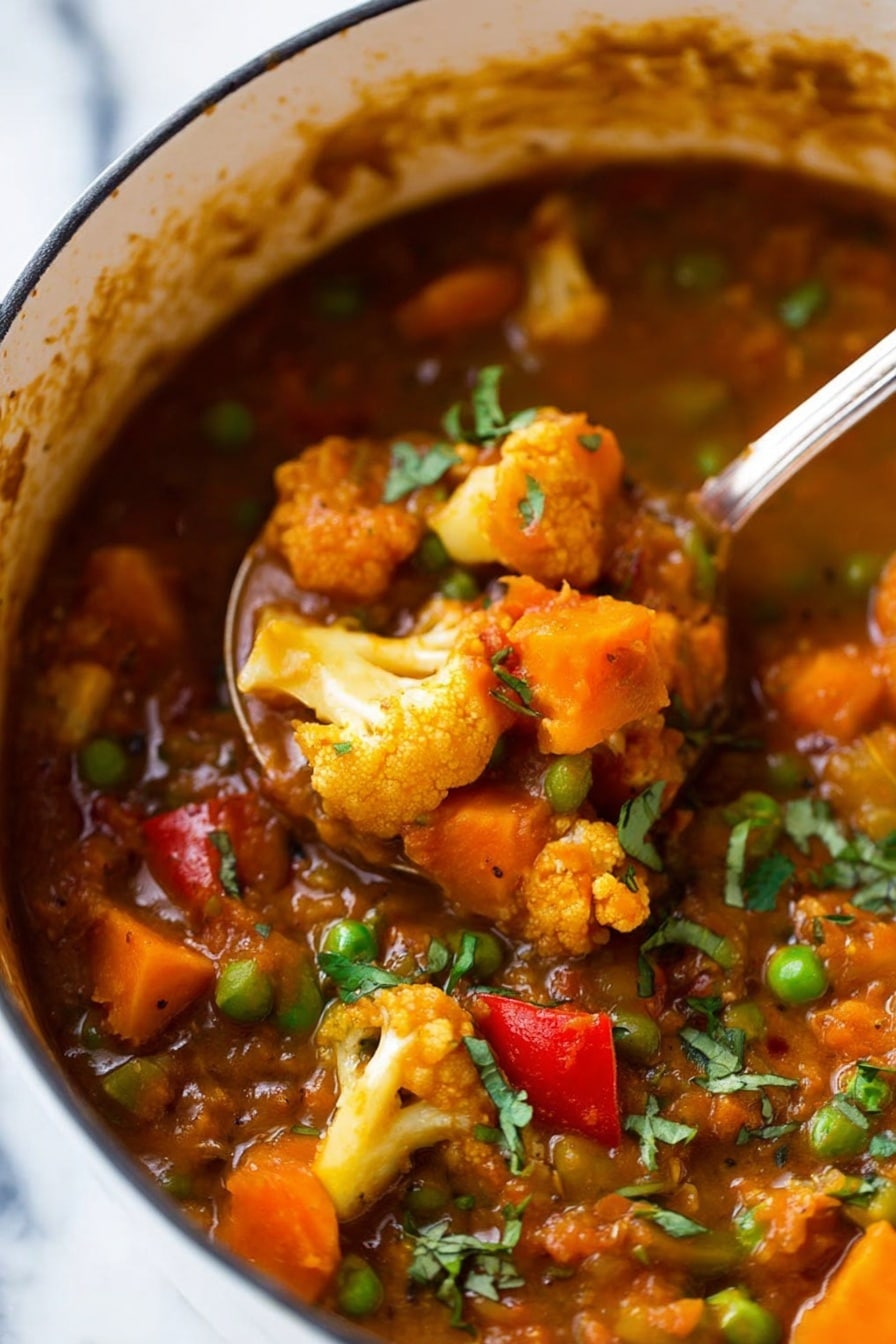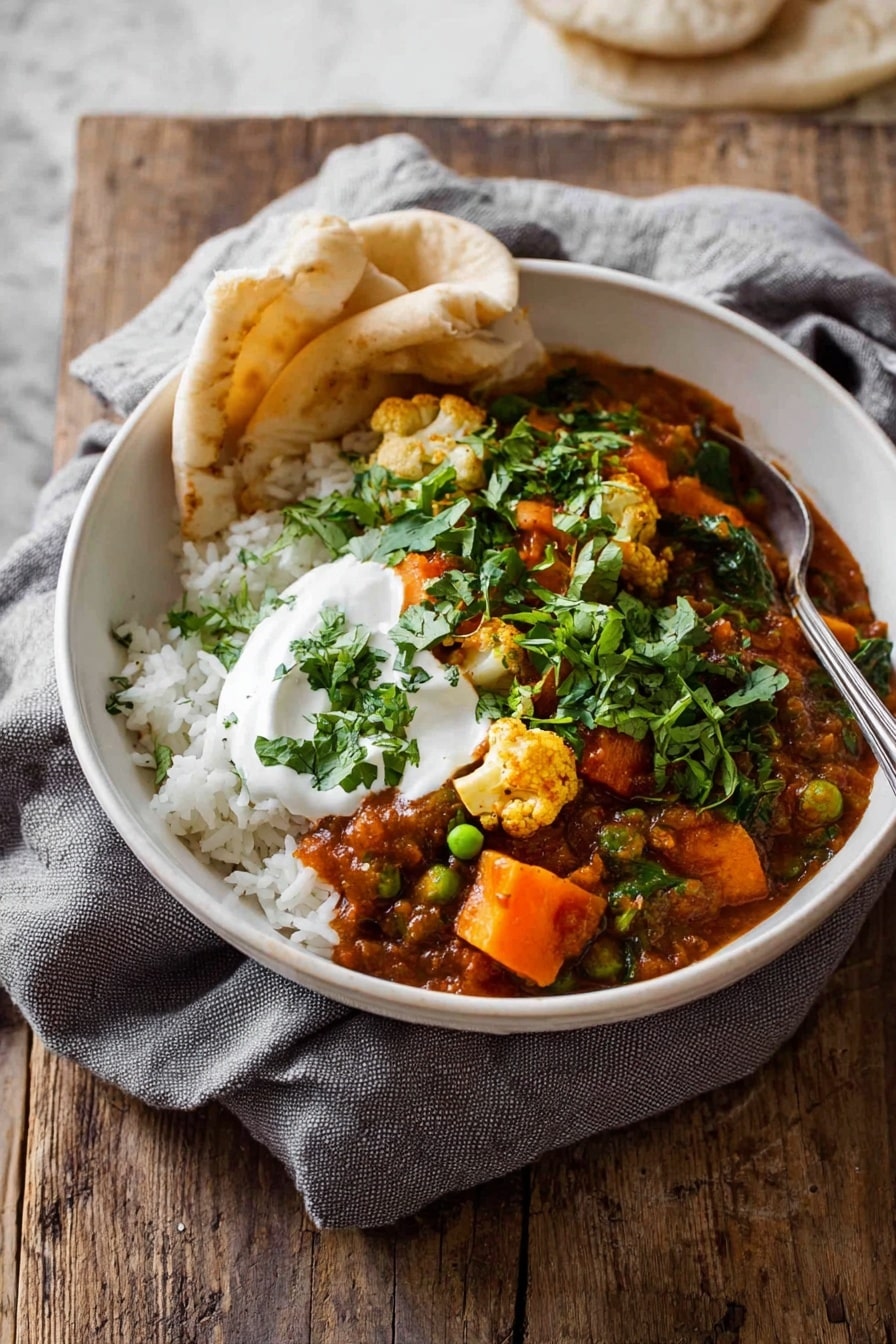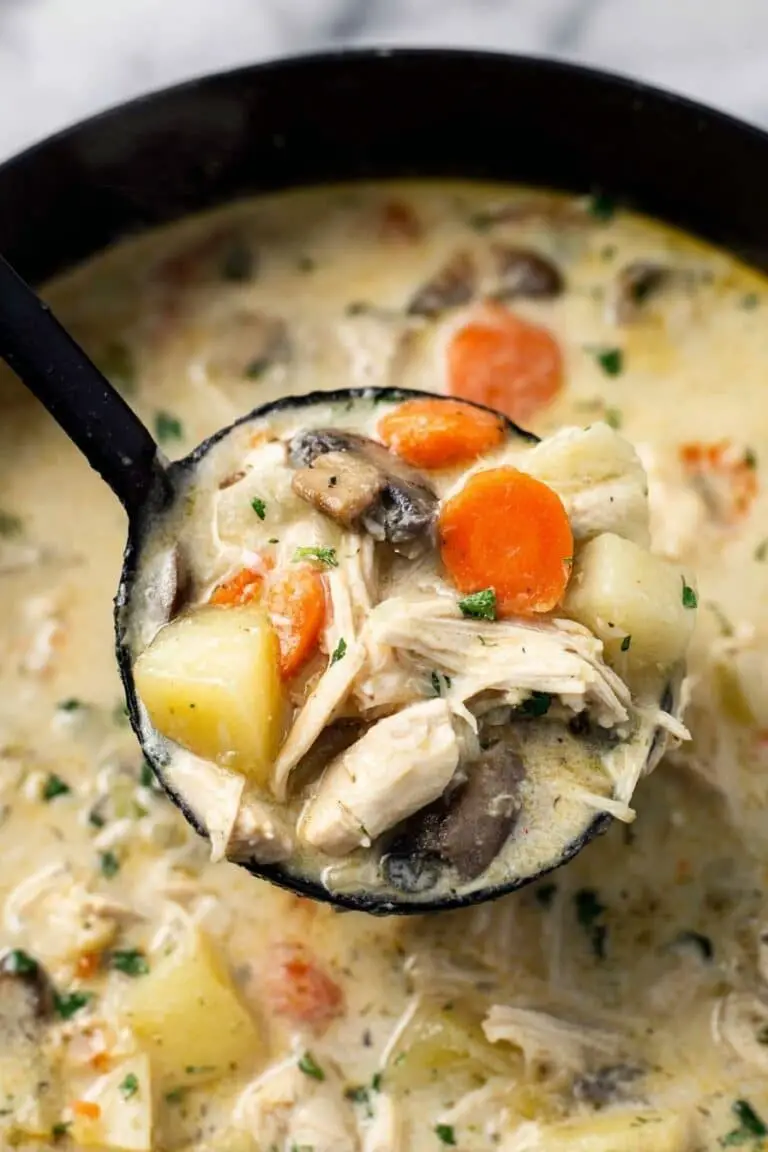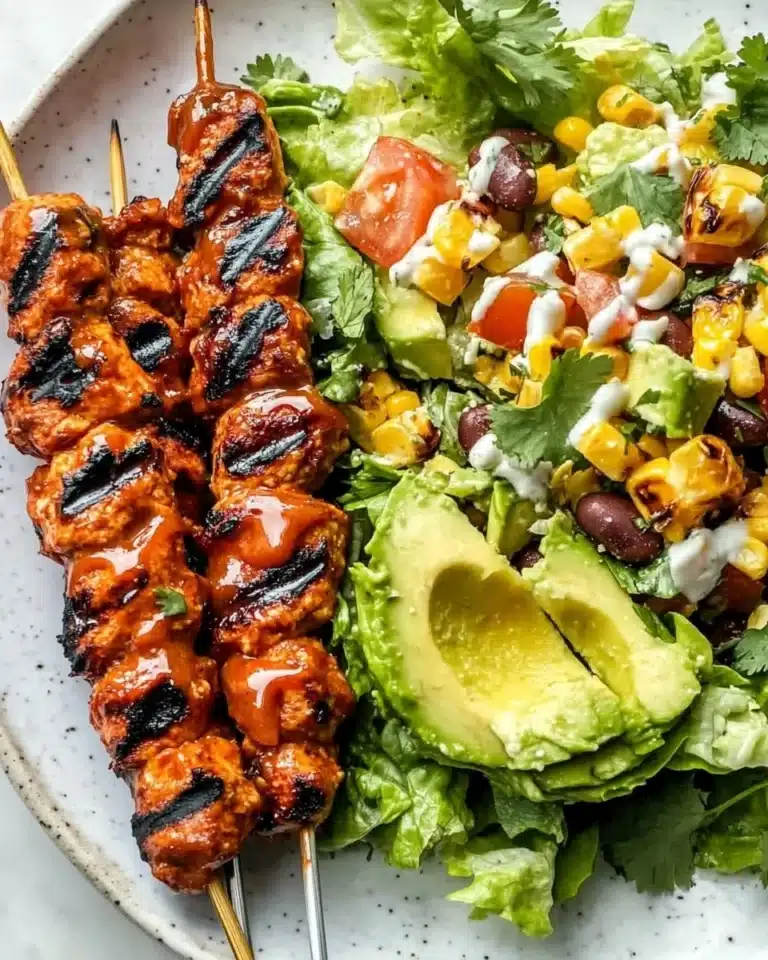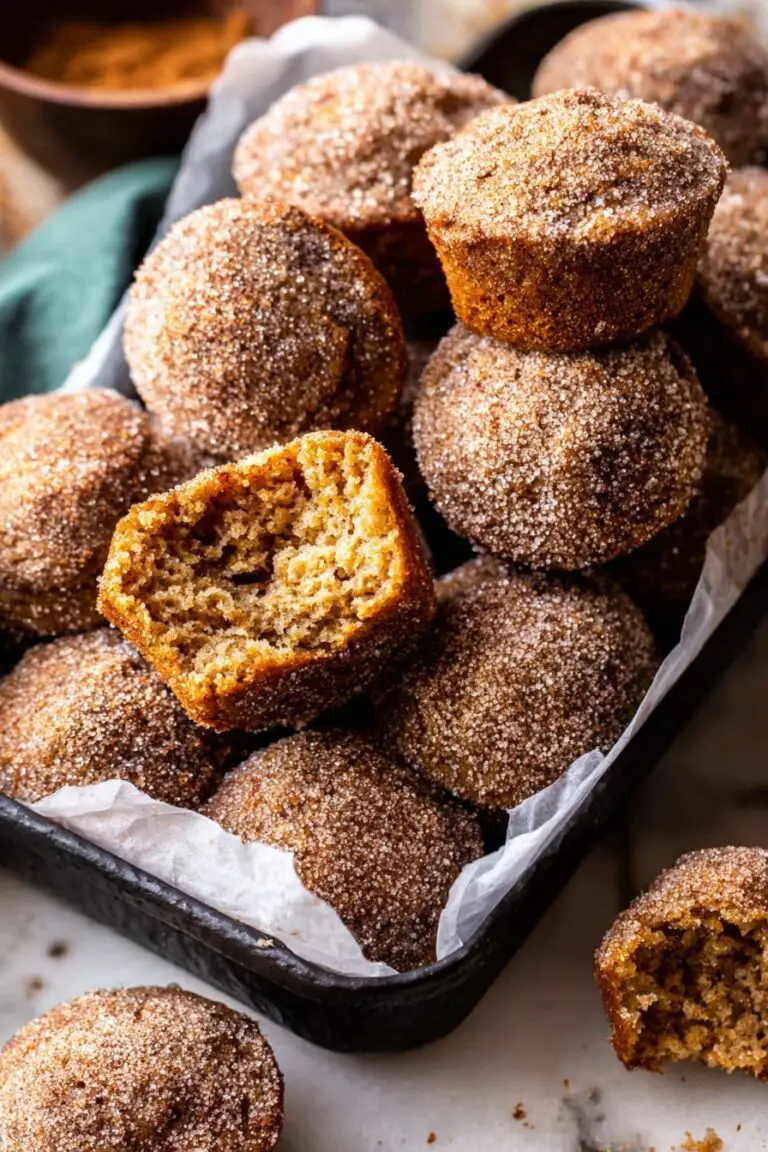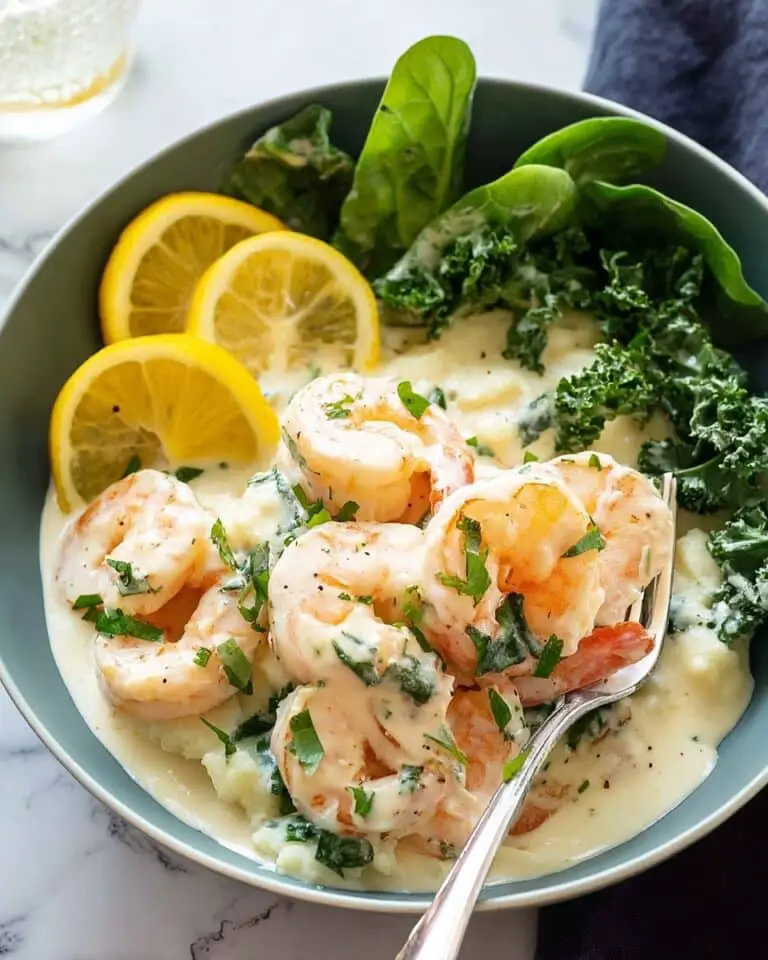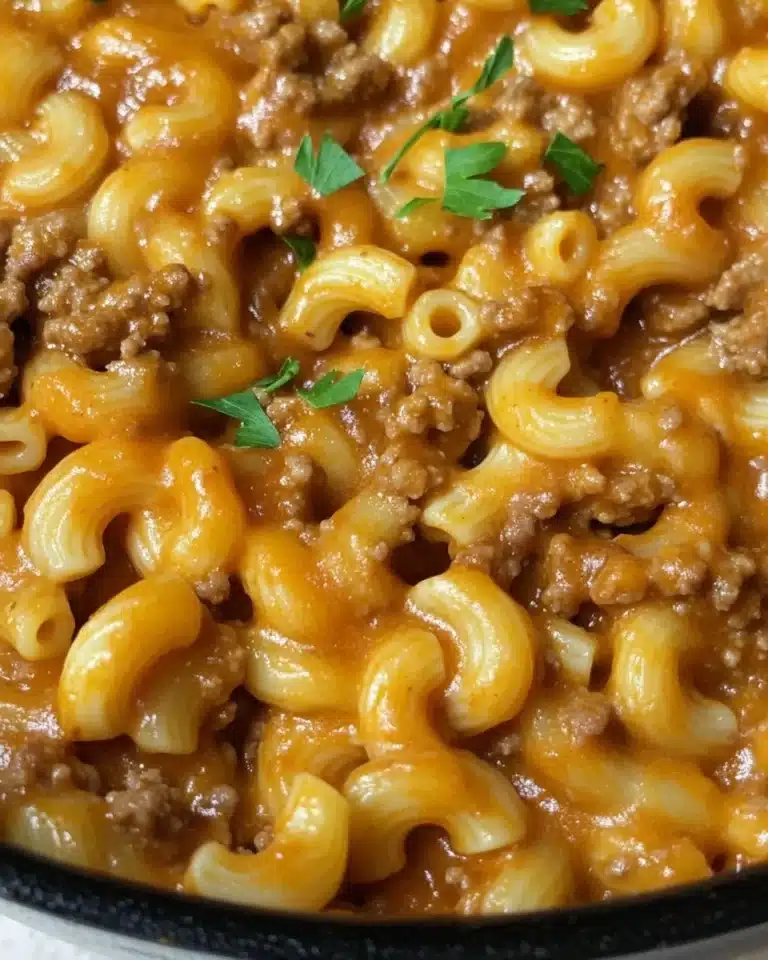If you’re looking for a comforting, wholesome dish that’s packed full of flavor and veggies, you’re going to adore this Vegetable Curry Recipe. I absolutely love how this curry comes together — it’s rich, creamy, and has just the right amount of spice to make every bite sing. Whether you’re a seasoned curry fan or dipping your toes into Indian cooking for the first time, this recipe will quickly become a weeknight favorite. Stick with me, and I’ll share all the little tricks that help it turn out perfect every time!
Why You’ll Love This Recipe
- Versatility: You can swap vegetables based on what’s in season or what you have on hand.
- Creamy texture without dairy: Cashew cream or coconut milk makes this curry rich and satisfying.
- Balanced spices: It’s flavorful without being overwhelming, perfect for kids and spice lovers alike.
- Easy to prepare: Even if you’re new to curry-making, the steps are straightforward and foolproof.
Ingredients You’ll Need
This vegetable curry recipe shines because of its fresh, simple ingredients that blend beautifully together—from fragrant spices to a colorful mix of vegetables. I usually pick vegetables that are in season for the best flavor and budget-friendly prices.
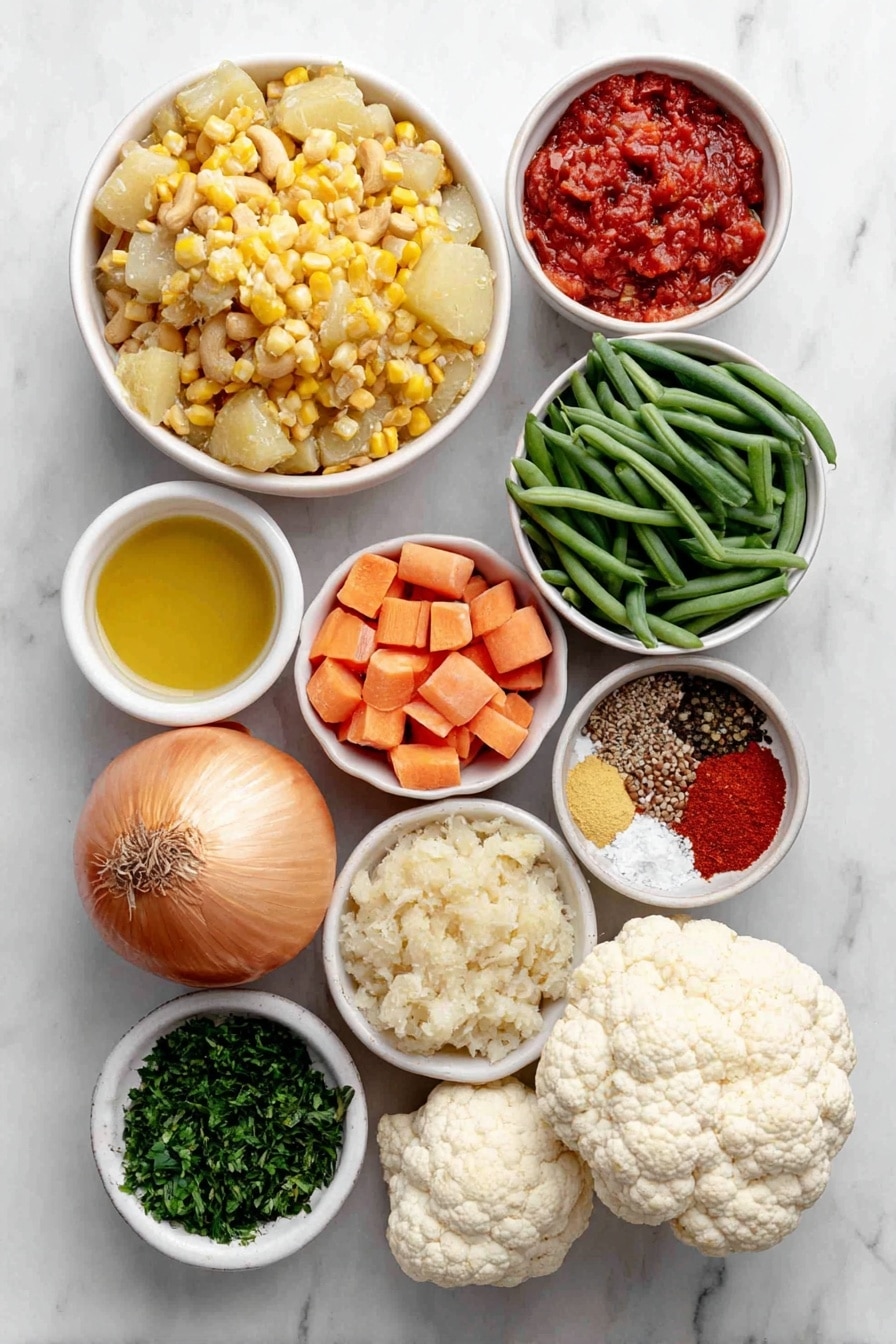
- Oil: A neutral oil works best—helps sauté the spices and veggies perfectly.
- Onion: Very finely chopped so it melts into the curry base without any chunky bits.
- Green chili: Totally optional—slit or chopped, it adds a nice kick if you like things spicy.
- Ginger garlic paste: A flavor powerhouse; if you prefer, you can use freshly grated ginger and crushed garlic.
- Pureed tomatoes: Use mild tomatoes to avoid tanginess overpowering the curry.
- Coriander leaves: Fresh and chopped, they add brightness as a garnish right before serving.
- Kasuri methi: Dried fenugreek leaves bring a lovely earthy aroma to the curry, highly recommended if you can find them.
- Hot water: Used to thin out the curry to your preferred consistency.
- Cashews: Soaked and pureed to make a creamy base—alternatively, use thick coconut milk or nut butter.
- Carrot: Peeled and chopped, adds natural sweetness and color.
- Potatoes: Peeled and chopped for a hearty texture that absorbs spices well.
- Green beans: Adds crunch and fresh vegetable flavor.
- Peas: Fresh or frozen, they’re sweet and pop in every mouthful.
- Cauliflower florets: Tender yet robust, a classic curry veggie.
- Sweet corn kernels: Optional, but I love the little bursts of sweetness they add.
- Kashmiri red chili powder: Provides color and mild heat; great for that warm curry glow.
- Garam masala: The magic spice blend that adds complexity and aroma.
- Cumin powder: Earthy and warm, but you can switch this up with curry powder if you want a different flavor profile.
- Coriander powder: Adds depth and a slight citrus note, balancing the spices.
- Turmeric: Just a pinch for color and subtle earthiness.
- Salt: Adjust to taste to bring out all the flavors.
- Whole spices (cumin seeds, cardamoms, cinnamon, bay leaf, or curry leaves): Essential to create that authentic Indian curry aroma at the start.
Variations
This vegetable curry recipe is a fantastic base that you can easily tweak to suit your family’s tastes or whatever’s in the fridge. I encourage you to play around and make it your own.
- Use Coconut Milk Instead of Cashews: If you want a dairy-free or nut-free version, swapping cashew cream for coconut milk works beautifully and gives the curry a lovely tropical touch.
- Spice Level Adjustments: When I first tried this, I left out the green chili entirely for my kids—they loved it—and then added a little extra Kashmiri chili powder for myself later on.
- Different Vegetables: Feeling adventurous? Try swapping cauliflower with zucchini or adding eggplant for a different texture and flavor.
- Protein Boost: Adding chickpeas or tofu chunks makes this curry heartier, perfect for meal prep or a vegan protein hit.
How to Make Vegetable Curry Recipe
Step 1: Prepare the Cashew Cream
First things first—if you’re using cashews, soak them in half a cup of hot water for about 15 minutes. This softens them up and makes them so easy to grind into a smooth, creamy base. You’ll want a silky texture here, so add a bit more water if necessary. I discovered this trick early on, and it completely transformed my curry into something dreamy and rich without needing cream or butter.
Step 2: Sauté the Whole Spices and Onions
Heat your oil in a pan and add cumin seeds, cardamoms, cinnamon, and bay leaf (or curry leaves if you prefer). Let these sizzle gently until fragrant—this step wakes up their essential oils and truly builds the flavor base. Then add your finely chopped onions and green chili (if using). Cook on medium heat until the onions turn golden brown—this takes some patience but it’s worth it for the sweet, caramelized depth it adds.
Step 3: Add Ginger Garlic Paste and Tomatoes
Stir in the ginger garlic paste, mixing it well to avoid any raw bite. After about a minute, add the pureed tomatoes. Cook this mixture until oil begins separating on the sides—about 8 to 10 minutes. This signals that your masala base is cooked perfectly. I remember initially rushing this part and the flavor felt flat, so take your time here!
Step 4: Add Spices and Vegetables
Next, sprinkle in your Kashmiri chili powder, garam masala, cumin powder, coriander powder, turmeric, and salt. Stir to coat the masala base evenly with spices, then add chopped carrots, potatoes, green beans, peas, cauliflower, and sweet corn if you’re using it. Mix gently so everything is well coated.
Step 5: Pour Hot Water and Simmer
Now’s the time to pour in your hot water—start with 1¼ cups and add more as you go if you want a thinner curry. Cover and simmer on medium-low heat until the vegetables are tender, about 15 to 20 minutes. During the simmer, give it a stir occasionally to make sure nothing sticks to the bottom.
Step 6: Stir in Cashew Cream and Final Seasoning
Once your veggies are tender, stir in the cashew cream (or coconut milk/nut butter if using) and kasuri methi if you have it. The curry should be lovely and creamy now. Let it cook for another 3 to 5 minutes to meld everything together. Don’t forget to taste and adjust salt or spices here—this final tweak makes all the difference.
Step 7: Garnish and Serve
Turn off the heat and sprinkle chopped coriander leaves on top. I love how the fresh herbs add such a vibrant contrast to the rich curry. Serve immediately with steaming basmati rice, warm naan, or your favorite flatbread. My family goes crazy for this combo!
Pro Tips for Making Vegetable Curry Recipe
- Use Fresh Spices: I always grind my whole spices freshly if I can—it makes a noticeable difference in aroma and flavor.
- Don’t Rush Onions: Let those onions brown slowly; it builds the foundation of flavor.
- Adjust Water Gradually: It’s easier to thin your curry later than to fix one that’s too watery.
- Avoid Overcooking Veggies: Keep an eye on the potatoes and cauliflower so they stay tender but not mushy.
How to Serve Vegetable Curry Recipe
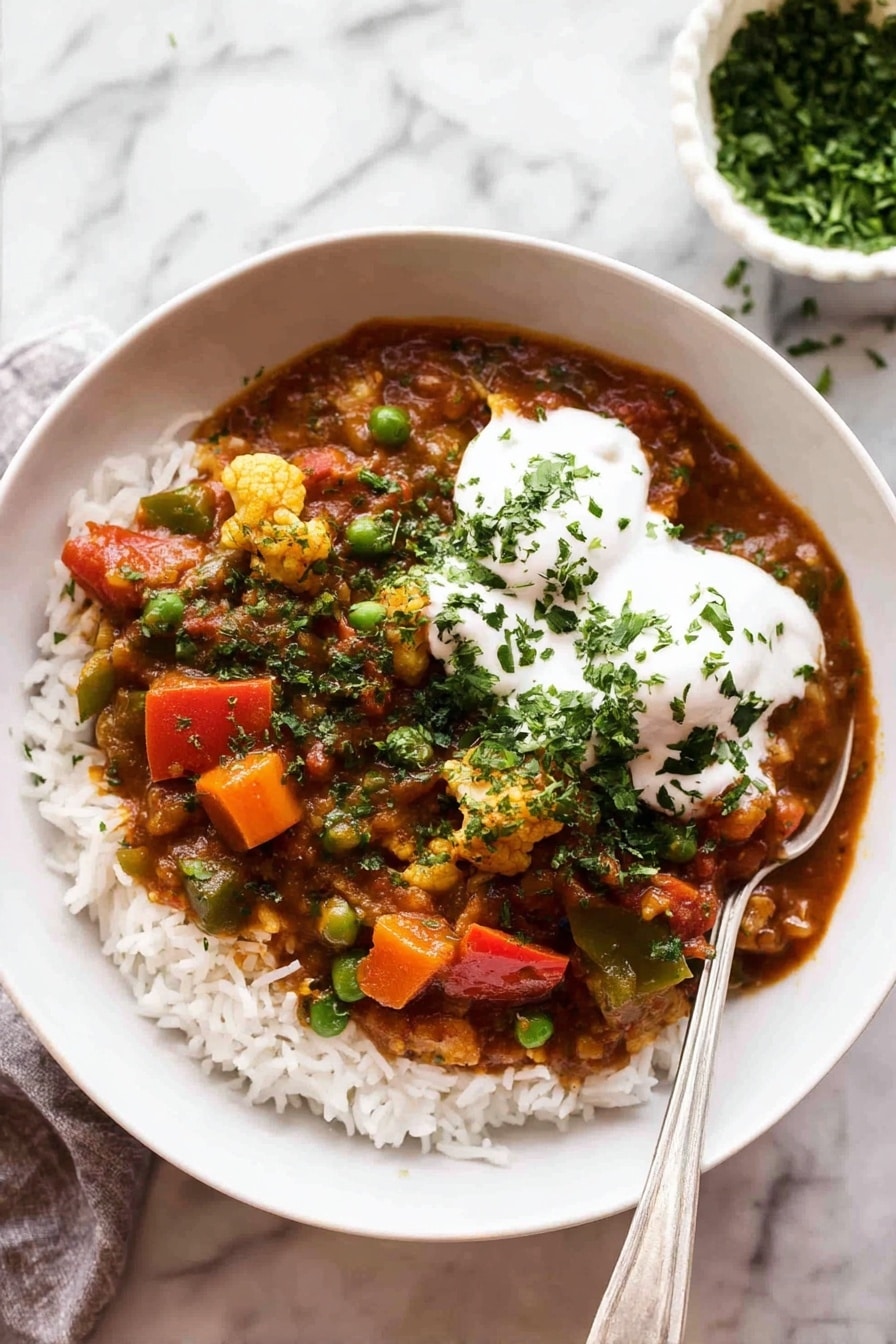
Garnishes
I always finish this curry with a generous sprinkle of chopped fresh coriander leaves—it adds such a fresh, herbal brightness. Sometimes, I add a little dollop of plain yogurt or a squeeze of lime on the side for an extra zing. If you like a bit of crunch, toasted cashews on top are delightful too.
Side Dishes
My favorite way to serve this vegetable curry recipe is with fragrant basmati rice and warm garlic naan. Sometimes I add a simple cucumber raita or a few pickles for contrast. It makes the meal feel special but still easy and homey.
Creative Ways to Present
For special occasions, I love serving this curry in individual bowls topped with edible flowers or fresh pomegranate seeds for a pop of color. You could also turn it into a fusion bowl with quinoa, avocado, and a sprinkle of toasted seeds for a fun twist that’s totally Instagram-worthy!
Make Ahead and Storage
Storing Leftovers
I usually store leftovers in an airtight container in the fridge for up to 3 days. The flavors actually deepen overnight, so the next day’s curry tastes even better. Just make sure to cool it before refrigerating to keep the veggies from getting too mushy.
Freezing
This vegetable curry recipe freezes wonderfully. I portion it into freezer-safe containers and thaw it in the fridge overnight before reheating. It’s handy for busy weeks when you want a quick, tasty meal ready to go.
Reheating
When reheating, I prefer to warm it gently in a saucepan over medium-low heat, adding a splash of water if it’s thickened too much. This prevents the vegetables from drying out or becoming mushy. Microwave works in a pinch, but stirring halfway through helps keep the texture even.
FAQs
-
Can I make this vegetable curry recipe vegan?
Absolutely! This recipe is naturally vegan as it uses cashew cream or coconut milk instead of dairy. Just ensure any added bread or sides are vegan-friendly too.
-
Can I substitute the vegetables in this recipe?
Yes! Feel free to swap any veggies you don’t have for ones you prefer, such as zucchini, eggplant, or bell peppers. Just keep in mind their cooking times—for instance, softer veggies need less simmering.
-
How do I make this curry less spicy for kids?
Omit the green chili and reduce the Kashmiri red chili powder, or leave it out entirely. The curry will still be flavorful and creamy without the heat.
-
Can I prepare this vegetable curry recipe in advance?
Yes! It actually tastes better the next day after flavors have mingled. Store it in the fridge overnight and reheat gently before serving.
-
What can I serve with vegetable curry?
Serve it alongside basmati rice, naan, roti, or any flatbread. For a lighter side, cucumber raita or a crisp salad pairs perfectly.
Final Thoughts
I can’t tell you how many times this vegetable curry recipe has saved me on busy nights. It’s easy, satisfying, and brings everyone to the table eager for seconds. Whether you keep it mild or ramp up the spice, this curry is the kind of recipe that becomes a staple because it’s adaptable and reliably delicious. I hope you give it a try and find it as comforting and flavorful as I do—you’ll be hooked before you know it!
Print
Vegetable Curry Recipe
- Prep Time: 15 minutes
- Cook Time: 25 minutes
- Total Time: 40 minutes
- Yield: 4 to 5 servings
- Category: Main Course
- Method: Stovetop
- Cuisine: Indian
- Diet: Vegetarian
Description
A simple and flavorful Indian-style vegetable curry made with mixed vegetables, aromatic spices, and optional creamy cashew sauce. This vibrant curry is perfect for a wholesome meal served with rice, roti, naan, or bread and is suitable for those looking for a delicious vegetarian dish with a balance of fresh ingredients and warm spices.
Ingredients
Spices & Aromatics
- 2 to 3 tablespoons oil
- 1 cup (1 large) onion, very finely chopped
- 1 green chili, slit or chopped (optional, leave out for kids)
- 1 tablespoon ginger garlic paste (or 1 tablespoon each grated or crushed)
- ¾ to 1¼ teaspoon Kashmiri red chili powder (adjust to taste, leave out for kids)
- 1 teaspoon garam masala
- 1 teaspoon cumin powder (omit to use curry powder)
- 1 to 1½ teaspoon coriander powder (omit to use curry powder)
- ⅛ teaspoon turmeric (omit to use curry powder)
- 1 teaspoon salt (adjust to taste)
- ½ teaspoon cumin seeds + 3 cardamoms + 1 inch cinnamon + 1 bay leaf or 1 sprig curry leaves
- 1 tablespoon kasuri methi (optional, dried fenugreek)
Vegetables
- ¾ to 1 cup carrot (peeled, chopped, 1 medium)
- ¾ to 1 cup potatoes (peeled, chopped, 1 medium)
- ½ cup green beans (chopped or French beans)
- ½ to ¾ cup fresh or frozen peas
- 1½ cups cauliflower florets (substitute with peas, potatoes & carrots if desired)
- ¼ cup sweet corn kernels (optional)
- 1 cup (3 medium) pureed tomatoes (or finely chopped, avoid tangy tomatoes)
- 1¼ to 2 cups hot water (use as required)
Optional Creamy Base
- 20 cashews (or ½ cup thick coconut milk or 1½ tablespoon nut butter, see notes)
- 2 to 3 tablespoons water for soaking cashews
Garnish
- 2 to 4 tablespoons coriander leaves, chopped
Instructions
- Prepare Cashew Cream: Soak 20 cashews in half a cup of hot water for 15 minutes. Then grind into a smooth puree using the soaking water. You can add more water if needed. Skip this step if using coconut milk as creamy base.
- Sauté Spices and Aromatics: Heat 2 to 3 tablespoons of oil in a pan over medium heat. Add ½ teaspoon cumin seeds, 3 cardamoms, 1 inch cinnamon stick, and 1 bay leaf or a sprig of curry leaves. Once they become fragrant, add finely chopped onion and sauté until golden brown.
- Add Ginger Garlic Paste and Green Chili: Stir in 1 tablespoon ginger garlic paste and the green chili, and cook for 1-2 minutes until the raw smell disappears.
- Add Tomato Puree and Spices: Pour in 1 cup pureed tomatoes and cook for 5-6 minutes until the oil starts to separate. Then add Kashmiri red chili powder, garam masala, cumin powder, coriander powder, turmeric, and salt. Mix well and cook for 1-2 minutes.
- Add Vegetables: Add chopped carrots, potatoes, green beans, peas, cauliflower florets, and optional sweet corn kernels to the pan. Stir to coat all vegetables evenly with the spices.
- Add Cashew Cream or Coconut Milk: Mix in the prepared cashew cream or substitute with ½ cup thick coconut milk or 1½ tablespoon nut butter for richness and creaminess.
- Add Water and Simmer: Pour 1¼ to 2 cups hot water as needed to make the curry sauce. Cover and cook on medium-low heat for about 20 minutes or until the vegetables are tender and cooked through.
- Finish with Kasuri Methi and Coriander: Crush and sprinkle 1 tablespoon kasuri methi over the curry, stir gently. Garnish with 2 to 4 tablespoons chopped coriander leaves just before serving.
Notes
- This vegetable curry is versatile and can be customized with your favorite vegetables.
- Cashew cream adds richness but can be replaced with coconut milk or nut butter for a dairy-free option.
- Adjust chili powder and green chili according to spice preference, especially for children.
- Serve hot with steamed rice, roti, naan, or your preferred flatbread.
- For a thicker curry, reduce the amount of water added or cook uncovered to evaporate excess liquid.
Nutrition
- Serving Size: 1 serving
- Calories: 179 kcal
- Sugar: 10 g
- Sodium: 711 mg
- Fat: 8 g
- Saturated Fat: 1 g
- Unsaturated Fat: 7 g
- Trans Fat: 0.03 g
- Carbohydrates: 24 g
- Fiber: 6 g
- Protein: 5 g
- Cholesterol: 0 mg

